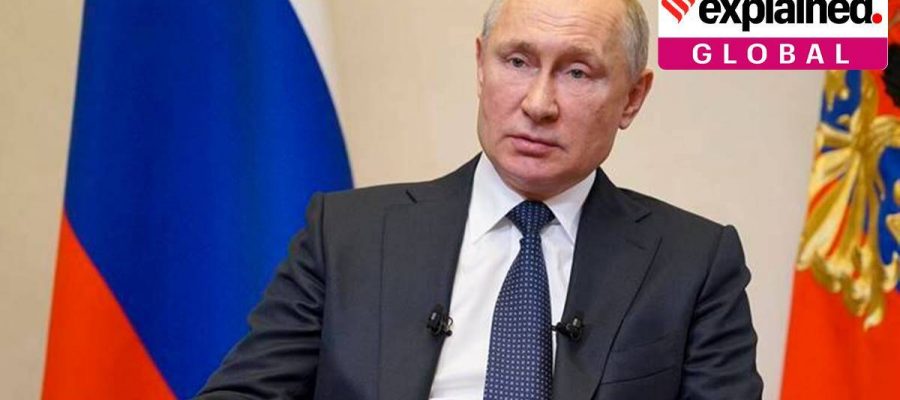In November, the United States left the OST first after accusing Russia of violating the pact– allegations that Russia denied. Moscow has now blamed Washington for its own decision of leaving the treaty.
In what experts fear could lead to growing mistrust between global powers, Russia on Friday announced that it was leaving the Open Skies Treaty (OST), an accord between over 30 countries that allows participants to fly unarmed reconnaissance flights over any part of their fellow member states.
In November, the United States left the OST first after accusing Russia of violating the pact– allegations that Russia denied. Moscow has now blamed Washington for its own decision of leaving the treaty.
What is the Open Skies Treaty?
First proposed in 1955 by former US President Dwight Eisenhower as a means to deescalate tensions during the Cold War, the landmark treaty was eventually signed in 1992 between NATO members and former Warsaw Pact countries following the demise of the Soviet Union. It went into effect in 2002 and had 35 signatories, including key players US and Russia, along with one non-ratifying member (Kyrgyzstan).
The OST aims at building confidence among members through mutual openness, thus reducing the chances of accidental war. Under the treaty, a member state can “spy” on any part of the host nation, with the latter’s consent. A country can undertake aerial imaging over the host state after giving notice 72 hours before, and sharing its exact flight path 24 hours before.
The information gathered, such as on troop movements, military exercises and missile deployments, has to be shared with all member states. Only approved imaging equipment is permitted on the surveillance flights, and officials from the host state can also stay on board throughout the planned journey.
So, why did the US leave the Open Skies Treaty?
While it was envisaged as a key arms control agreement, many in Washington had for over a decade accused Russia of non-compliance with OST protocols, blaming Moscow of obstructing surveillance flights on its territory, while misusing its own missions for gathering key tactical data.
As per a report in The New York Times, US President Donald Trump was also unhappy that a Russian reconnaissance flew over his golf course in New Jersey state in 2017.
In May 2020, the Trump administration announced its intention of withdrawing from the OST, accusing Russia of “flagrantly and continuously violating the Treaty in various ways for years”, and left it in November that year.
Why did Russia leave after the US?
A contentious issue regarding Russia’s compliance with the OST was its alleged reluctance to allow flights over Kaliningrad, its exclave in Eastern Europe that sits between NATO allies Lithuania and Poland. Russia defended its position by saying that the restrictions were permissible under treaty rules, and gave the example of the US imposing similar limits on flights over Alaska.
After the US left the OST, Russia sought assurances from NATO allies who continued to remain on the treaty that they would not transfer data collected by their flights over Russia to Washington. In its statement, Russia said that these requests were not backed by the NATO members, prompting it to leave the treaty.
Significance of the Open Skies Treaty
The OST was signed in 1992, much before the advent of advanced satellite imaging technology which is currently the preferred mode for intelligence gathering. Yet, as per a report in The Economist, surveillance aircraft provide key information that still cannot be gathered by satellite sensors, such as thermal imaging data.
Notably, the Economist report also mentions the OST’s utility for Washington, which since 2002 flew over 200 surveillance missions over Russia and its ally Belarus. A former Trump official had also hailed OST data gathered during the 2014 Russia-Ukraine conflict. Overall, more than 1,500 flights have been conducted under the OST, as per the Associated Press.
What happens now that both the US and Russia are out?
The failure of the Open Skies Treaty follows the demise of another significant arms control accord, the Intermediate-Range Nuclear Forces (INF) Treaty, after both the US and Russia left it in 2019.
Explained: The missile system and treaty at the heart of US anger with Turkey
The INF Treaty was signed between the United States and the Soviet Union in 1987, in which both powers agreed to destroy two categories of lethal missile systems from their own stocks as a means to decelerate the nuclear arms race.
Experts now worry about the fate of the much larger US-Russia ‘New START’ nuclear arms control agreement, which is slated to expire on February 5, 2021. US president-elect Joe Biden, who takes office on January 20, has spoken in favour of preserving the treaty, as opposed to outgoing President Trump, who did not want to renew it unless China too was made part. Despite Biden’s willingness, however, there are apprehensions that negotiations with Russia would not be completed before the February deadline.
Source: Read Full Article


